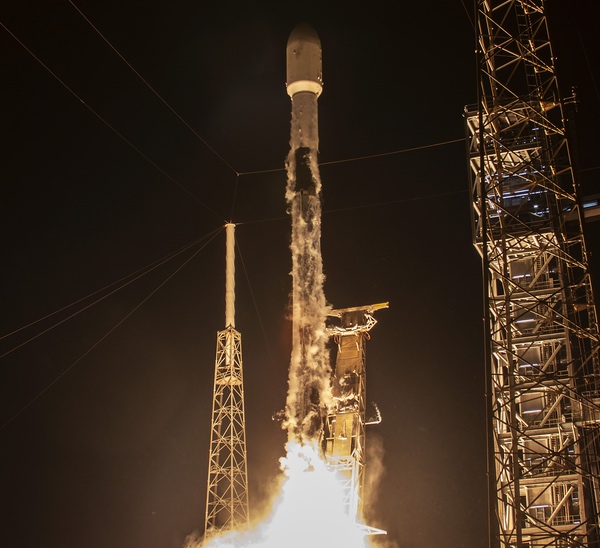NewSpace, satcom, and heavy rocketsby Aditya Chaturvedi
|
| As a key player in the launch services category, India needs to eye a bigger global share in the launch market, where SpaceX reigns supreme. |
According to a report by BryceTech, in the third quarter of 2023, SpaceX lifted about 381,278 kilograms of spacecraft, more than 15 times the mass of the second-place organization, the China Aerospace Science and Technology Corporation (CASC). Roscosmos was third at 17,475 kilograms.
ISRO was in seventh place in satellite upmass at 5,817 kilograms. It trailed SpaceX, CASC, and Roscosmos, as well Northrop Grumman, Arianespace, and United Launch Alliance.
The statistics indicate a crystal-clear picture. The lion’s share in commercial launch services market is held by SpaceX, and the gap with the nearest competitors, China and Russia, is colossal.
Evolving launch market
Given those facts, an Indian communication satellite hitching a ride on SpaceX is very logical in an interconnected, globalized world. SpaceX has already established a reputation as the world’s most optimal and scalable launch provider.
However, as a key player in the launch services category, and with its enviable reputation for completing critical missions on a shoestring budget (smaller than many Hollywood blockbusters), India needs to eye a bigger global share in the launch market, where SpaceX reigns supreme.
In 2017, ISRO set a then-world record by lifting 104 satellites into orbit on a single mission. This was not just a historic feat for a country with a humble journey in space, shattering the previous record of 37 satellites in 2014 by Russia, but heralded the coming-of-age of Indian space sector.
Since then, the commercial launch market has evolved a great deal, with SpaceX being the prime mover, as well as a catalyst and disruptor. The market consolidation by SpaceX has lowered entry barriers, Moreover, SpaceX CEO Elon Musk has stated that he will even launch satellites by Starlink’s competitors, such as OneWeb, Telesat, and Amazon’s Project Kuiper.
However, SpaceX’s significant gains is precluding opportunities for others in the launch segment. Moreover, with a mix of advanced innovation and wherewithal by the company, the gap could become unbridgeable with time, making the winners and the also-rans in this race a foregone conclusion.
NSIL has demonstrated remarkable resilience and adaptability in the past few years. In the wake of the Russia’s invasion of Ukraine, it joined SpaceX in securing launch contracts to launch OneWeb satellites that had been planned to launch on Soyuz rockets.
Heavy rockets
Another key topic is that reliance on behemoth SpaceX rockets by countries like India should not downplay the importance of building rockets, especially in the era of dual-use technologies, interoperability, weaponization of space, and the increasing emphasis on the military space domain.
In an interview last year, K Sivan, former chairman of the Indian space agency ISRO, underscored the need for the Indian government to invest in heavy rockets, working in cooperation with the country’s growing private space industry.
“We need bigger rockets and bigger systems. We cannot live with frugal engineering alone. We must embrace high-thrust rockets and cutting-edge technology. In this regard, the government’s decision to involve private industries in space activities is a positive step,” said Sivan.
Note: we are using a new commenting system, which may require you to create a new account.
